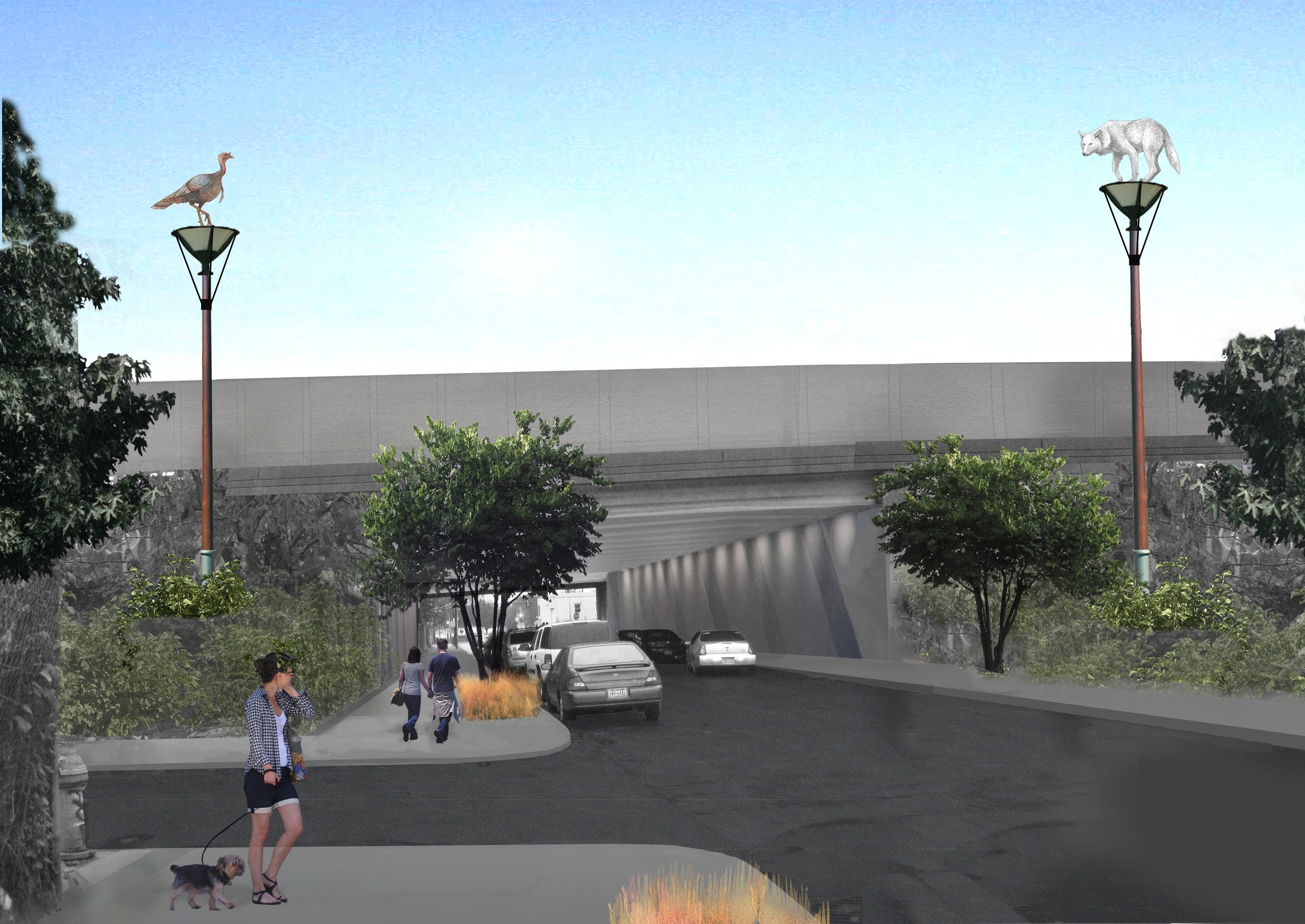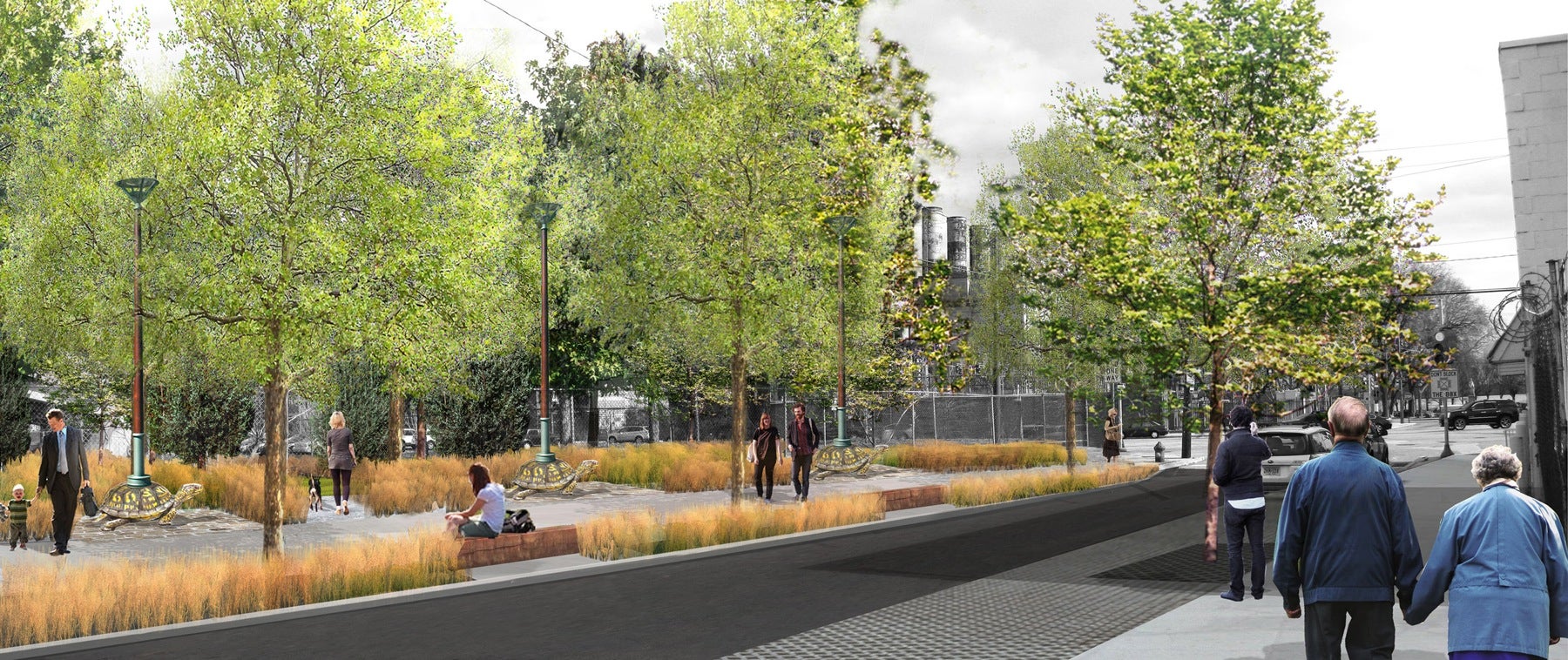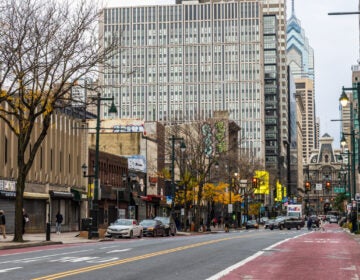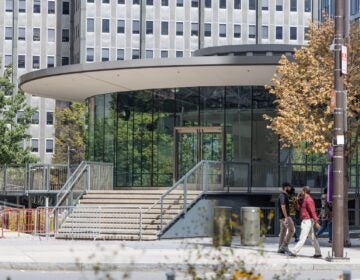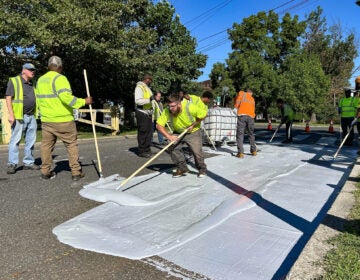Public art for Columbia Avenue Connector juxtaposes aspects of Old and New Worlds
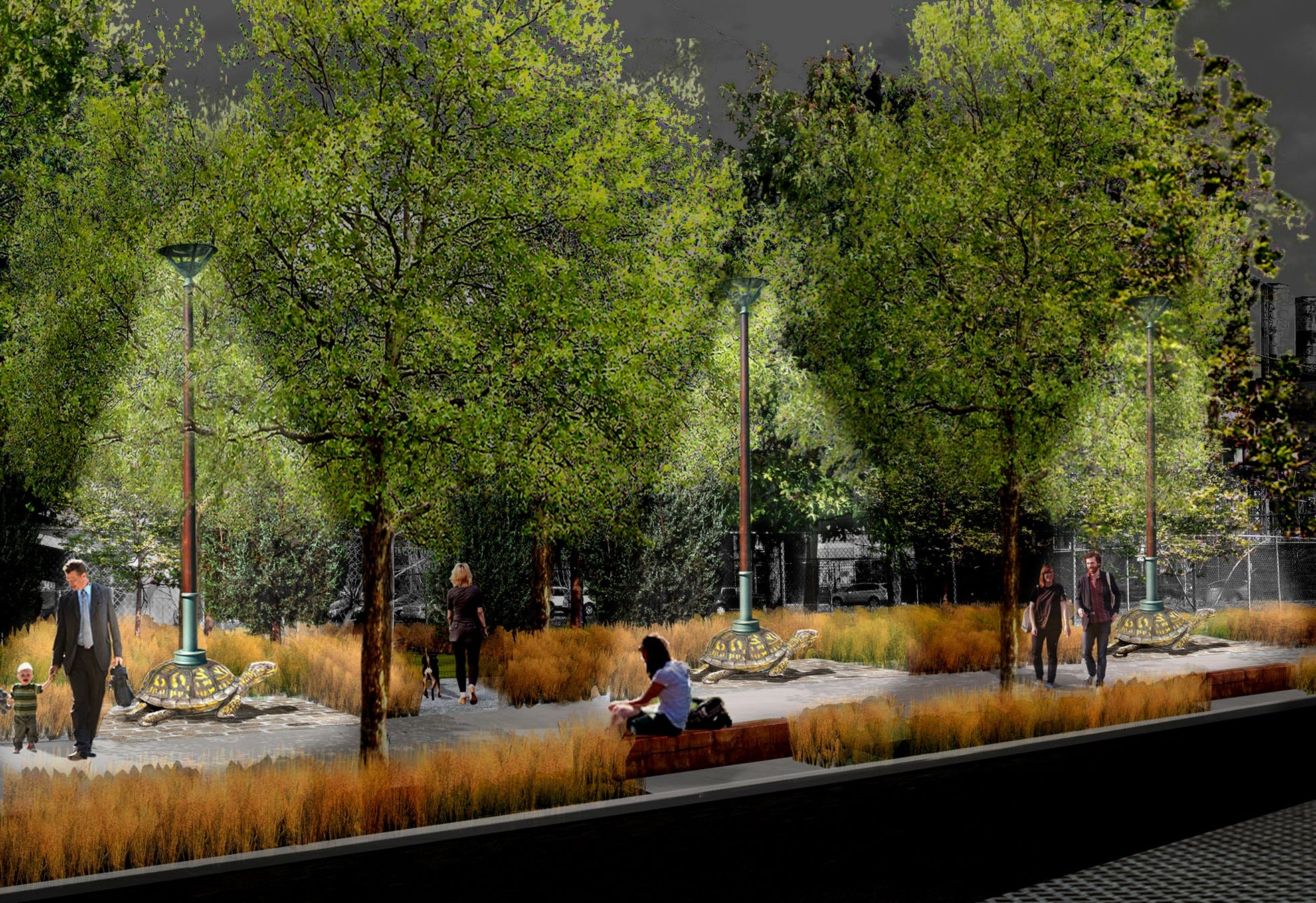
Artist Donald Lipski’s just revealed designs for public art on Columbia Avenue mix Lenni Lenape images and creation myth with modern light fixtures – a juxtaposition that to him evokes the meeting of the New World and Old World that took place at the park at the foot of the street, when William Penn and Chief Tamenend signed a treaty of friendship.
With art commission approval, a fiberglass wolf and turkey will help light the western entry of the I-95 overpass. Large bronze turtles will carry lights on their backs, down toward the Delaware river.
The proposed work is part of the Delaware River Waterfront Corporation’s Columbia Avenue Connector project. Like the Race Street connector that came before it, the Columbia Avenue Connector aims to improve the connection between a city neighborhood – in this case, Fishtown – and a portion of the Central Delaware Waterfront – in this case, Penn Treaty Park. Landscape architect Bryan Hanes has completed a streetscape plan for the portion of Columbia between Girard Avenue and the I-95 overpass. Funding is being sought for this portion of the project. Hanes also designed the Penn Treaty Park Master Plan.
Each connector street must also make walking beneath the I-95 overpasses feel like a safe and pleasant thing to do. Just like with Race Street, Columbia will achieve this in large part with lights and other improvements, which will be installed and paid for by PennDOT as it improves and enlarges I-95 as part of the GIR-2 portion of the project, now underway.
The public art portion of the project will cost between $250,000 and $300,000, said Delaware River Waterfront Corporation Planner/Project Manager Karen Thompson. It will be paid for with William Penn Foundation grant money, she said. While work on the sculptures can begin if the art commission gives its approval next month, installation won’t happen until the next phase of PennDOT’s work, Thompson said. She expects it will be a couple of years.
Lipski drew inspiration from the animal symbols of the three Lenni Lenape clans: Wolf, Turkey and Turtle. Provided the Philadelphia Art Commission approves the project at its meeting next month, a wolf and a turkey made out of fiberglass will sit atop light posts planted on the west side of the underpass, one on the north side and one on the south. They will light up and “serve as a beacon or gateway,” Thompson said. Lipski unveiled the designs at a recent public meeting held at the offices of the on-line Penn Treaty Museum.
The Turtle Clan lived in this area, and Chief Tamanend himself was a member. So a series of five bronze turtles with light posts on their backs would lead the way to the park.
Why use the turtles to carry the lightposts?
For one thing, Lipski liked the rhythm of something repeated, rather than a single, large sculpture.
For another, Lipski, inspired by the Surrealists, loves unlikely pairings. “When you put together two objects that don’t seemingly have anything to do with each other, it becomes poetic,” he said. “It suggests other things.”
Most of the time, Lipski says his pairings have no context that says they belong together, although they visually look like they do. “It sets up a situation where people can make their own metaphors, where ten different people will take it in ten different directions,” he said in a phone interview.
This project is a bit different from his norm, in that there is more context than what immediately meets the eye.
A Lenni Lenape creation myth says that the earth is a turtle who rose up from the water, and that the first man and woman came from a tree that grew upon the turtle’s back.
Lipski said the pairing of something contemporary with something as ancient as a turtle also suggests to him the meeting of The Old World and The New World and the signing of the friendship treaty, but his hope is that passers-by find many different meanings and suggestions in the work.
The animal portions of the work will be realistic looking, and Lipski said while he’s good at some things, this isn’t one of them. So he will be working with two Philadelphia-area artists: Brothers Christopher and John Collins. Lipski once had a studio not far from Columbia, but he is now based in New York. Learn more about the Collins’ work here, and Lipski’s here.
Marsha Moss, a public art curator and consultant who created the public art selection process for DRWC, said the selection process began at the beginning of 2012 with eight “seasoned public artists” who presented to an assembled jury of neighborhood residents and experts.
A sign will explain the significance of the turtle, turkey and wolf for passers-by who don’t already know, she said, but that knowledge isn’t necessary to appreciate the artwork.
“What’s nteresting with this project is that it could be appreciated at many levels,” Moss said. “Children may walk buy surprised and delighted by the animals. They may want to sit on turtles, and they are welcome to do so.”
Lipski said his work is most importantly for the neighborhood residents who will regularly walk by. “I really think that these will become signposts and part of their daily experience,” he said. “I hope they eventually become like old friends.”
WHYY is your source for fact-based, in-depth journalism and information. As a nonprofit organization, we rely on financial support from readers like you. Please give today.



